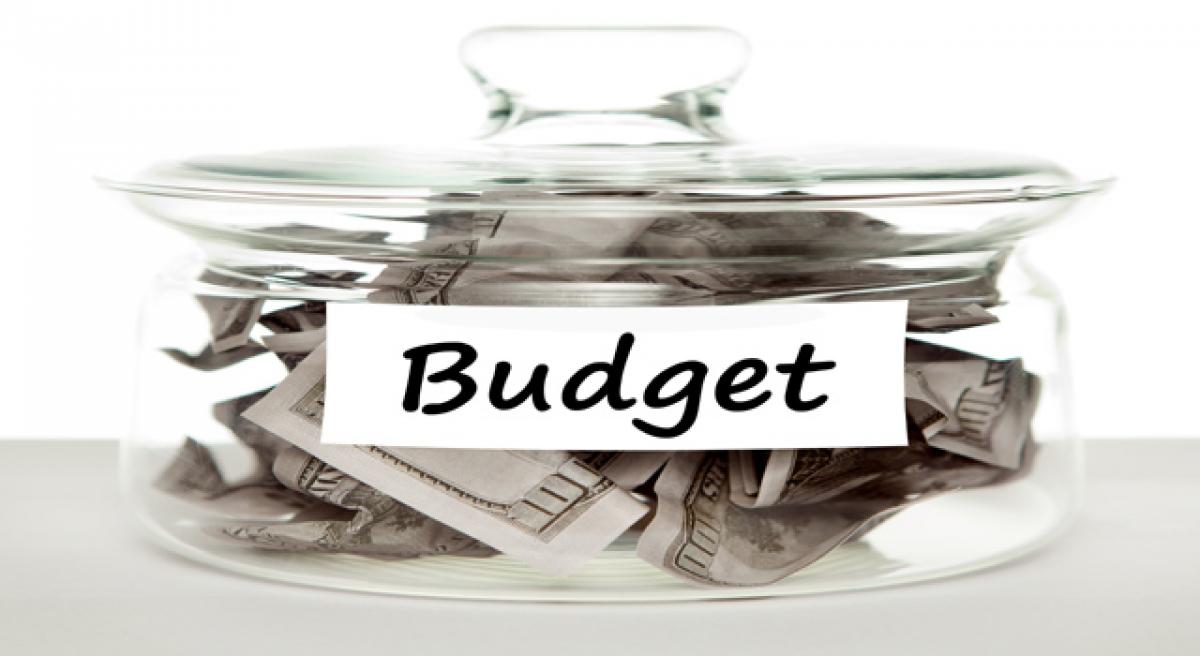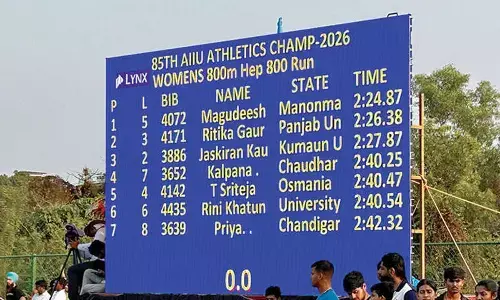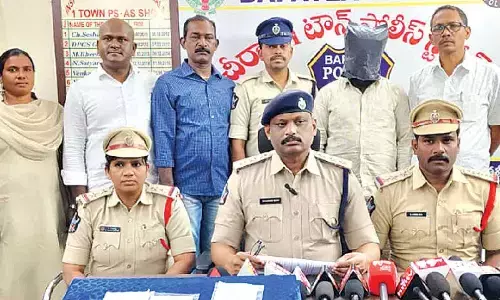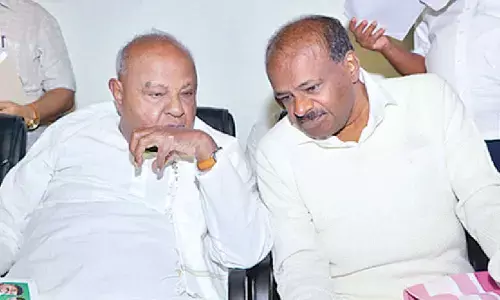Facets of the Indian Budget Part - II

An aspect of major importance, the budget has the power to make or break the economy. The budget has a major impact and influence on the economy of a country and the way it runs. It is important to have an in-depth knowledge about the Indian budget, its impact and its anticipated future.
An aspect of major importance, the budget has the power to make or break the economy. The budget has a major impact and influence on the economy of a country and the way it runs. It is important to have an in-depth knowledge about the Indian budget, its impact and its anticipated future.
Pros of the Budget:
The budget ticks the boxes on fiscal, revenue and primary deficit parameters. It has done better on the revenue deficit target (2.5% vs 2.8%) and effective revenue deficit target (1.5% vs 2%). Not only that, it projects an accelerated decline in the effective revenue deficit, reaching 0% by 2018-19.Effective Revenue Deficit is the difference between revenue deficit and grants for creation of capital assets.
There has been some deviation from the goals envisaged under the Fiscal Responsibility and Budget Management Act to support investment activity. But the overall direction has been the correct one of consolidation: fiscal deficit as a percentage of gross domestic product (GDP) narrowed to 3.9% in 2015-16 from 4.9% in 2012-13, and revenue deficit as a percentage of GDP has come down to 2.5% from 3.6%.
The increased outlay on infrastructure, particularly the Pradhan Mantri Gram SadakYojana, Rural connectivity is great for growth; and power and logistics are key to India’s competitiveness. Budget 2016-17 speaks to the government’s potential strengths: Power, infrastructure, railways, and petroleum and gas.
These have helped offset the shortfall in direct tax collections because of weak manufacturing activity, poor corporate performance, increased food subsidy, and lower-than-anticipated nominal growth. Nominal GDP growth was 8.6% in fiscal 2016 against 11.5% assumed in the budget.But the most pleasant surprise is the direction in which we want to go on the environment.
An additional cess on coal and taxes on cars are signals of a long-overdue resolve that the environment is no longer a luxury. There are small administrative victories like the abolition of the distinction between plan and non-plan expenditure.
Farm sector: Nearly 65 per cent of small farmers in this country depend on rain-fed irrigation. More than 75 per cent of Indian farmers are not covered by crop insurance. Since shocks, such as bad weather or bad health, affect the poor significantly more than the average citizen in the country, allocations provided for irrigation, crop insurance and health insurance will significantly impact the rural population’s ability to withstand negative economic shocks.
In particular, farm insurance (Pradhan MantriFasalBheemaYojana), health insurance and cooking gas connections for BPL (below poverty line) families are excellent initiatives( PradhanmantriUjjawalaYojana) that will focus government spending on those sections of the population that need the government’s attention the most — the poor and the downtrodden.
Fertilizer and electricity subsidies together amount to 1.6 per cent of the GDP, much of which leaks abroad or to non-agricultural uses, or goes to inefficient producers, or to firms given the exclusive privilege to import. Rs 40,000 crore of subsidies are provided in the electricity sector.But precisely for these reasons it has proved politically impossible to close the inefficient firms or eliminate the canalization of imports.
By providing a legal framework for the Aadhaar platform, the “JAM trinity” of Jan Dhan, Aadhaar and mobile would be strengthened considerably.This will help to rationalize the regime of subsidies and lead to better targeting. Again, better targeting of subsidies to deserving beneficiaries would help to foster domestic demand, particularly in the rural sector.Another key measure in the budget relates to providing a legal framework for the Aadhaar platform, which will help to ensure that subsidies are directed to the needy. More than Rs 40,000 crore of subsidies provided for fertilizers.
As for crude prices, they are expected to average $10 per barrel lower next fiscal compared with $45 in the current one. This means the transitory benefit of lower oil prices will continue and afford an offset to the extra spending being made based on the One Rank One Pension and Seventh Pay Commission recommendations. Increased excise duty on oil will benefit the next fiscal year more, because these came into effect only from November 2015.
On the financial sector front, some of the measures are welcome, though most of them are along expected lines — such as the recapitalization of banks (Indradhanush Plan), the strengthening of asset reconstruction companies( providing them with 100% FDI), a dispute resolution regime for financial firms and enabling the setting up of a Monetary Policy Committee to set interest rates.
Education fares below expectations- While there has been a slight increase in the allocation in absolute terms, the budgetary allocation for education has declined, both as a percentage of GDP and as a percentage of the total Budget. It was 0.5 per cent of GDP and 3.8 per cent of the revenue expenditure for 2015-16, and it is down to 0.48 per cent of GDP and 3.7 per cent of the Budget estimates this year
Outlay of Rs.19,000 crore that the Central government will spend this year on rural roads as part of its goal to ensure that all habitations are connected by 2019( Pradhan Mantri Gram SadakYojana, and a push to achieve universal village electrification in the next two years( DeenDayalUpadhyay Gram JyotiYojana). Between improved road connectivity and the availability of electricity, the potential is significant for a multiplier effect on the rural economy and improvements to the quality of life for residents of the hinterland.
Social sector:
SarvaShikshaAbhiyan budget increased by 2% from 2015-16 (revised estimates) while theMid-Day Meal scheme budget increased by 5%.The Budget proposes the introduction of a health insurance scheme that would provide up to Rs.1 lakh as coverage against hospitalization costs for economically weak households, with senior citizens above the age of 60 eligible for another Rs.30,000 in top-up cover.
The National Health Mission budget increased by 2%, while the Mahatma Gandhi National Rural Employment Guarantee Scheme, which according to the finance minister had received its highest allocation yet in this budget, increased by 4% from the previous years.Swachh Bharat Mission (SBM), the flagship programme on rural sanitation, saw one of the biggest jumps at 38%.
However, this jump is in part due to lower revised estimates.Health : the big jumps in allocation are in health insurance—the old RashtriyaSwasthyaBimaYojana has been renamed and has received a 152% hike (Rs.900 crore). The allocation for the National Social Assistance Programme (for the aged, disabled, widows, the Annapurna Scheme) has gone up only marginally, from Rs.9,000 crore last year to Rs.9,500 crore.
The other, equally laudable, initiative is to provide all families below the poverty line with cooking gas( PradhanMantriUjwalaYojana). This can afford those in underprivileged homes the dignity of a quicker and less harmful way to keep their kitchen fires running.National Dialysis Service Programme, shall raise funds through public private partnership to provide affordable care and assistance to the needful.
Way ahead :
- Global economy is in a serious crisis and does not seem to be coming out of it any time soon. With international scope limited for exports, therefore, what was required of this Budget was a direction to the economy in terms of generating demand domestically, which in turn would generate employment for the fast-growing unemployed youth population of this country. This Budget does little or nothing on that count.
- Government spending will have a critical role in improving both social and physical infrastructure, and provision of subsidies to the needy. There is certainly scope for the restructuring of government expenditure towards investment and better targeting subsidies using the Aadhaar platform.
- Good to see the announcements on the name change from disinvestment to Investment and Public Asset Management and the abolition of the distinction between Plan and Non-plan expenditure. Also welcome is the emphasis on sunset date and outcome review on new schemes.
- Given the fact that the global economy is tottering, there is a definite need to foster domestic demand to accelerate economic growth. At the same time, it is politically and economically imperative that jobs are created in the formal sector to avoid the demographic dividend becoming a demographic liability. Given these twin objectives for the country, this year’s budget to be an admirable exercise.
- While there are concerns regarding the budget’s ill effects on the banking sector, it is an excellent budget because it helps to foster rural demand and attempts to fix risks in the rural economy.
- In the final analysis, it is a thoughtful, prudent and careful budget. But it is hard to avoid the impression that it has been more careful than it needed to be, especially in the critical areas of bank recapitalization and corporate tax reforms.
- The budget ticks the boxes on fiscal, revenue and primary deficit parameters.
- Budget 2016-17 speaks to the government’s potential strengths: Power, infrastructure, railways, and petroleum and gas.
- More than 75 per cent of Indian farmers are not covered by crop insurance.
- A key measure in the budget relates to providing a legal framework for the Aadhaar platform, which will help to ensure that subsidies are directed to the needy.
- Budgetary allocations for education was 0.5 per cent of GDP and 3.8 per cent of the revenue expenditure for 2015-16, and it is down to 0.48 per cent of GDP and 3.7 per cent of the Budget estimates this year
- The Budget proposes the introduction of a health insurance scheme that would provide up to Rs.1 lakh as coverage against hospitalization costs for economically weak households and senior citizens.
- The PradhanMantriUjwalaYojana is an initiative introduced to provide all families below the poverty line with cooking gas.
- There is certainly scope for the restructuring of government expenditure towards investment and better targeting subsidies using the Aadhaar platform.
- It is politically and economically imperative that jobs are created in the formal sector to avoid the demographic dividend becoming a demographic liability.
By: Balalatha Mallavarapu
(The writer is a senior civil servant)

















